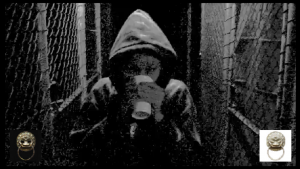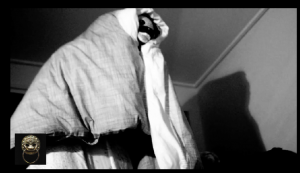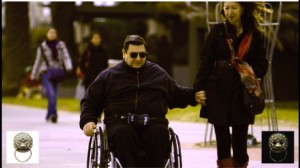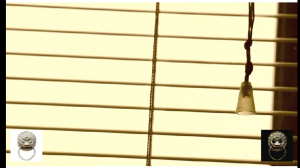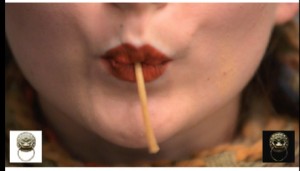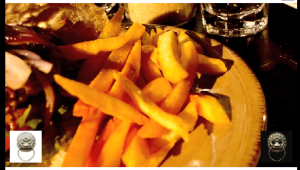April 2014
“If you eat me, you’re gonna gain weight, another year older, and a stomach ache.”
Film-TV 1 Analysis/Reflection 3
Question 3
From the week 4 lecture describe at least two reasons why we ‘shoot to edit’?
‘Shoot to edit’ may end up doing more takes of the same scene; yet we avoid missing out footage we need or shots required to connect with the next film sequence. Since numerous shots will be edited afterwards; we are in control of a stronger sense of continuity in the film in sense of space and camera movements. It is more certain that we will have more than enough coverage of scenes. It is also efficient to shoot various camera angles and shot sizes then edit compared to dividing into many shots in specific, in this case, it is more stressful while shooting.
Consider that sometimes a long take may not be possible to give particular atmosphere and idea to the film, we ‘shoot to edit’, to create certain mood and make sense of certain relationship between characters, as well as flow of the plot. This also allows filmmakers to have more options and space to be creative while editing among various shots with different camera angles and shot sizes in the same scene. They can experiment on shots in editing to make the best coherent whole. As if we didn’t ‘shoot to edit’, yet we would have to show constant camera movement in the shot, and we have to shoot everything in order without any mistakes, we probably have eliminated possible variety, even the perfect combination of shots we looking for.
First Sketch Film
Week 5
http://www.embres.ca/exhibit/watchthefilm/
Korsakow film Ceci N’est Pas Embres by Matt Soar
This is a website Hannah mentioned in the tutorial. It is quite an inspiration in planning my first sketch film in an non-linear way of presentation. Matt’s K-film ‘Ceci N’est Pas Embres‘ is composed with three seasons of winter, spring and summer. Every clips in each group will have the same in- and out- keyword of that particular season. In order to link between three seasons, one clip within the group has an out- keyword of the next season. That is, for example, a clip in the winter group will have an in- keyword of winter that associates it with all other winter clips, yet its out- keyword is spring then viewer will move from winter grouping to the spring grouping.
As Matt Soar said, most of us, most of the time, used to think about things as a storytelling in a linear form with beginnings/ causes, middles and ends/effects. In making Korsakow film, clips are associated not in the traditional way of storytelling, but keywords which there isn’t a definite combination, instead various connection over time.
Making a random K-film sounds quite easy by using one keyword which links in- and out- of all video clips. All the clips will be associated with one another. Yet, creating a linear K-film is completely different. There are a designated start SNU and end SNU. Each clip will have a different in-keyword which is the out-keyword of the previous clip. That means, there will be a route when going through the film. As for a multi-linear K-film, I reckon it feels like touching on a bit randomness and a bit linearity. We need to put similar things together in a group and then find out the connection between various groups.
I found it quite interesting that how I as a viewer can click and go through the video clips without a single second of thought.
Sketch Essay
‘Lucid Dreaming’ (2011)
http://vogmae.net.au/classworks/2011/luciddreaming.html
I chose this Korsakow film titled Lucid Dreaming (2011) to study since I think the construction of a K-film is close to the idea of a lucid dreaming experience. Lucid dream is a kind of dream in which we become aware we are dreaming. I began to see a K-film – an exploration of assorted video clips – is quite similar to a dream sequence with fragmented and probably dissonant states in one’s mind. Lucid Dreaming (2011) is more likely an experimental piece. Rather than forming a narrative, it is performing a list of various dream-related clips. It composes of some abstract ideas, some objects, and atmosphere of places where most of them carry strong mood and emotions. This film focuses on the notion of dreaming, that is interesting to explore as well ambiguous yet enough to evoke feelings.
Interface
The interface is simple only with a big viewing screen that is the SNU window, and two previews. These two previews are placed on the right and left side at the bottom corner of the viewing screen. Instead of showing thumbnails of footages going to play, the two previews windows are displayed as two buttons with a door- knocker in black and white background respectively. I quickly related the two buttons to the distinction of nightmare and comforting dreams because of the background colours. I had this first impression of ‘rapping’ the door- knockers before I enter another space in this dream sequence. The centered SNU window has drawn all my attention while watching this K-film and made me feel like I am travelling among variety types of dreams of somebody.
Content
The opening clip is different everytime I start the K-film again. After several attempts on clicking on the two buttons, I realized that there is no multi-linear narrative and no cause-and-effect relationship between clips. I keep going through the clips and I found two grouping of dreams. They are terrifying dreams and pleasant dreams respectively. Within the group, most of the clips actually quite resemble each other closely. In the group of terrifying dream, that is nightmares, the clips are generated around gloomy and mysterious ambience. Clips included concrete objects like flipping of shadows, moving of frightening creatures and sudden appearance of unknown hand on a window, and abstract senses of being trapped in a car as well as escaping in car park. Most of the nightmare video clips have the common characteristic of using the grey or blue toned which trigger the feeling of fear and discomfort.
Besides, most of clips are slightly out of focus and don’t reveal the whole image of the object, in this case they create the sense of mysterious and creepy when viewers don’t have much awareness of where and what the film subject is. In contrary, the video clips group of pleasant dreams is with vivid images. They evolve a sense of loving and caring especially in the clip of a woman holding hands with a guy on wheelchair. The shared feature produced in the clips like sunshine, beach, waves, light stealing through shutter, pier, and the sky in evening is the sense of warm colours and spacious environment in a way they develop a state of sereneness and a gently calming effect.
Some clip contents are a bit hard to clarify which group they are in. For example, clips of food, running of tap water, a close-up shot of a mouth of a woman piping spaghetti and putting coins in a glass bottle are quite abstract. When viewing these clips, I found the sound of the clips has been emphasized. Like in the clips of food, there is surrounding noise of people talking and laughing so I related it to the pleasant dreams group. Yet the sound of piping spaghetti and the jingling sound made by the dropping coins are sort of disturbing therefore I put them in the nightmare group.
Pattern
Pattern making in K-film is to help make sense of all these seemingly unrelated video clips and meaning is aroused from the relationship between them. I tend to jump between the two buttons at first; just to try learning about the grouping of the clips. The patterns are emerged after my few trials on clicking the two buttons randomly. The video clips do not show obvious logical coherence at first. Later I understand the two grouping of dreams; I discovered all the clips are connecting to the themes and moods associated to nightmares and pleasant dreams. All videos in pleasant dreams are related to safe and peace and yet another mouse click may bring in a nightmare which acts as a disturbance. The film also demonstrates a pattern of familiarity and surrealism based on the nature of dreams – how I found the familiar sight in the dreams to give myself a tranquil moment or the disorienting quality in a terrifying dream I experience that upsets me.
How do the three combine to ‘mean’ and ‘do’
The video clips are like demonstrating the human consciousness when dreaming that possibly bouncing among all these mental pictures; in which they are either abstract or concrete. How I chose the sequence of watching the clips create a more personal experience and interpretation by clicking on the two door-knocker buttons. I discovered that when viewing the groups of pleasant dreams, by clicking the button in white background goes into the next clip in same group since the colour matches (I logically connected the button in white background to the strikingly bright images showing in the interface). When the clip showing in the interface shift to another group, the colour of the background of the button changes in corresponding to the video group and moves from right to left. This is how interface and pattern function in watching K-films over and over again. The button on the left always gives the next clip within its group, that is either showing all clips belongs to the pleasant dreams or nightmares while the button on the right acts as a disturbance, interrupted by moving to opposite group. That means every pleasant dream has been assigned to the correlative clips within the group of nightmare and vice versa. In additional, sometimes when the content of the clip becomes unclear, I rely on the left button to classify it into its group.
Watching this K-film is similar to looping around bit by bit the fragmentation in our dreams. The video clips are more like pieces in one of the many jigsaw puzzles in our mind which are never to be completed. After a clip of dream has been played once, it will no longer be shown again in this loop. It imitates the process of dreaming: one particular dream will only occur once in our mind during that particular period when we are dreaming. Even though people have recurring dreams but this recurring characteristic does not take place within a lapse of dreaming time. The dream may fall back to the same idea or nature of the dream but will not be the same.

